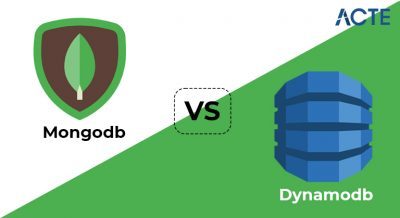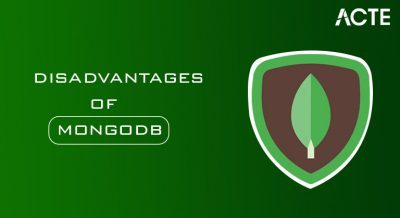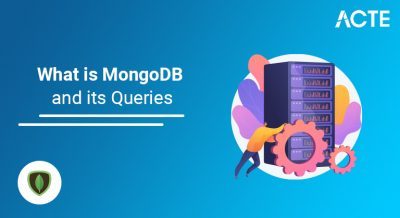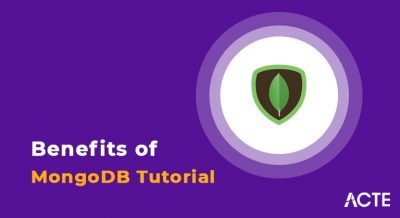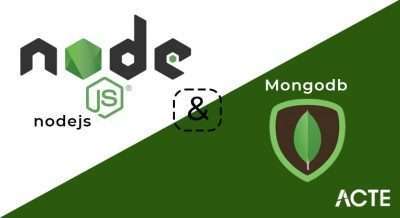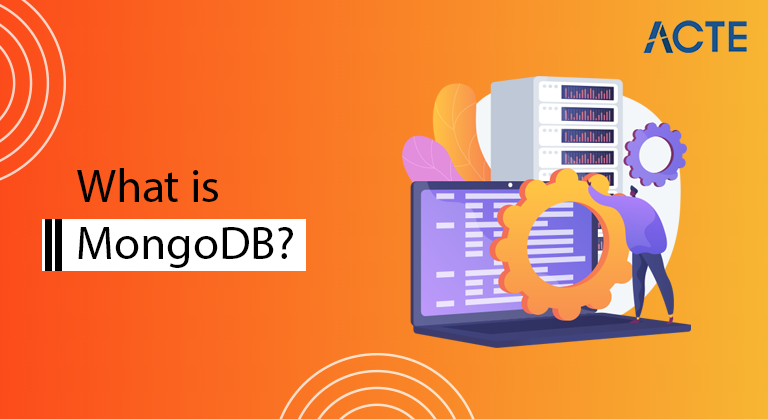
A well-liked NoSQL database, MongoDB is renowned for its adaptability, scalability, and simplicity of use. Unlike traditional relational databases, MongoDB stores data in JSON-like documents, allowing for dynamic schema design and facilitating rapid development and iteration. Its distributed architecture supports horizontal scaling through sharding, making it ideal for handling large volumes of data and high-traffic applications. MongoDB’s powerful query language, indexing capabilities, and aggregation framework provide robust performance and versatility for diverse data management needs.
What is MongoDB?
MongoDB is a widely used NoSQL database designed for scalability, flexibility, and performance. Unlike traditional relational databases, MongoDB stores data in flexible, JSON-like documents, which allows for dynamic schemas and makes it easier to handle and adapt to changing data structures.
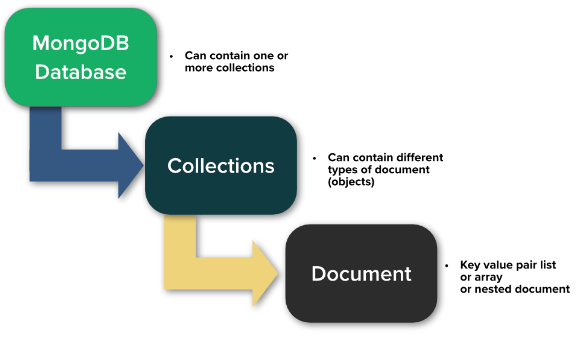
Its document-based model supports a wide range of data types and complex data relationships. MongoDB is built to scale horizontally across many servers through a technique called sharding, which distributes data across multiple machines. This makes it well-suited for large-scale applications with high data throughput.
Additionally, MongoDB includes features such as indexing, replication, and a powerful query language, providing robust performance and high availability for modern applications.
Why use MongoDB?
Using MongoDB offers several advantages, making it a popular choice for modern applications:
- Flexibility: MongoDB’s schema-less design allows for dynamic changes to data structures without downtime, making it easy to evolve and adapt as application requirements change.
- Scalability: MongoDB can handle enormous volumes of data and significant traffic by distributing data across numerous servers using sharding, which allows for horizontal scaling while maintaining availability and performance.
- Performance: MongoDB’s indexing, aggregation, and query optimization capabilities provide fast data access and efficient operations, making it suitable for real-time applications.
- Document Model: The JSON-like document model is intuitive and aligns well with modern programming practices, allowing for straightforward representation of complex data structures and relationships.
- High Availability: MongoDB’s replication feature ensures data redundancy and automatic failover, providing high availability and reliability for critical applications.
- Rich Ecosystem: MongoDB offers a comprehensive ecosystem of tools for data visualization, backup, and automation, enhancing productivity and simplifying database management.
- Developer Productivity: The flexibility in data modeling and the rich query language reduce the time needed to develop and maintain applications, improving overall developer efficiency.
- Community and Support: MongoDB has a large, active community and offers extensive documentation, commercial support, and a range of resources, helping developers and organizations to use and troubleshoot the database effectively.
Overall, MongoDB is a robust, versatile solution for handling diverse and evolving data needs, making it an ideal choice for various applications, from startups to enterprise-level projects.
Tutorial Scope for MongoDB:
1. Introduction to MongoDB
NoSQL databases distinguish themselves from traditional SQL databases by offering flexibility in schema design, scalability across distributed systems, and superior performance for managing unstructured and semi-structured data. Unlike SQL databases that adhere strictly to a predefined schema and use SQL for data manipulation, NoSQL databases like MongoDB support diverse data models such as document-oriented, key-value, columnar, and graph databases.
2. Installation and Setup
- System Requirements: Review the hardware and software requirements for running MongoDB on different platforms.
- Installing MongoDB on Various Platforms: Step-by-step guides for installing MongoDB on Windows, macOS, and Linux.
- Starting and Stopping MongoDB Server: Learn how to launch and properly shut down the MongoDB server.
- Basic Configuration Settings: Introduction to the essential configuration options and how to modify them.
3. MongoDB Architecture
Data is saved as flexible, schema-less documents in MongoDB using a JSON-like document storage format. These documents can have different structures and contents within a collection. These documents, analogous to rows in traditional databases, are grouped into collections, which are logical containers within databases for organizing related data. Each MongoDB database can host multiple collections, each serving specific application needs or data categories. Internally, MongoDB uses BSON (Binary JSON) as its data storage format.
4. CRUD Operations
- Creating Databases and Collections: Instructions on how to create and manage databases and collections in MongoDB.
- Inserting Documents: Learn different methods for adding data to your MongoDB collections.
- Querying Documents: Understand how to retrieve data using various querying techniques.
- Updating Documents: Explore different approaches to modifying existing documents in the database.
- Deleting Documents: Learn how to remove data from your collections efficiently.
5. Data Modeling
- Schema Design Best Practices: Guidelines for designing an efficient and scalable schema.
- Embedding vs. Referencing Data: Understand the pros and cons of embedding data versus referencing it in separate documents.
- Techniques for Modeling Relationships in MongoDB: Approaches for handling one-to-one, one-to-many, and many-to-many relationships.
- Designing for Scalability and Performance: Best practices for optimizing data models for performance and scalability.
6. Indexing
Indexes play a crucial role in optimizing database performance within MongoDB by enabling swift data retrieval and efficient query execution. They also significantly reduce access times by allowing MongoDB to pinpoint documents based on indexed fields swiftly. The process of creating and managing indexes in MongoDB involves defining them on specific fields within collections using commands like createIndex and reviewing them through tools such as MongoDB Compass or the listIndexes method.
7. Aggregation Framework
- Introduction to Aggregation: Understand the purpose and functionality of MongoDB’s aggregation framework.
- Aggregation Pipeline Concepts: Learn how to construct pipelines to process data.
- Using Stages in the Pipeline (Match, Group, Sort, Project): Detailed explanations of standard pipeline stages.
- Everyday Aggregation Operations: Examples of frequently used aggregation operations and their applications.
8. Advanced Querying
- Query Operators and Expressions: Learn about the various operators and expressions available for querying data.
- Using Regular Expressions: How do you use regex to match patterns within your queries?
- Full-Text Search: Implementing and using full-text search capabilities in MongoDB.
- Working with Dates and Arrays: Techniques for querying and manipulating data and array data types.
9. Replication and Sharding
- Concepts of Replication: Introduction to MongoDB’s replication for data redundancy and high availability.
- Setting Up Replica Sets: Step-by-step guide to configuring and managing replica sets.
- Managing Replica Set Members: Best practices for adding, removing, and managing members in a replica set.
- Introduction to Sharding: Understand sharding for horizontal scaling.
- Configuring Sharded Clusters: How to set up and manage a sharded MongoDB environment.
10. Security and Authentication
Setting up MongoDB involves essential tasks in user authentication, access control, and data security. Administrators begin by creating and managing user accounts with specific roles to effectively control access across databases and collections. Enabling access control is crucial, as is ensuring MongoDB is configured to securely enforce authentication requirements for all client connections.
11. Backup and Restore
Regular backups are essential for ensuring data integrity and maintaining operational continuity in MongoDB deployments. They serve as a critical safeguard against data loss due to hardware failures, human errors, or malicious attacks. MongoDB offers several backup strategies to accommodate different needs: mongodump provides a straightforward method for exporting data to BSON files, suitable for smaller datasets or ad-hoc backups. Mongosync facilitates continuous data synchronization between MongoDB instances, which is ideal for maintaining up-to-date copies across environments.
12. Performance Tuning
- Monitoring Performance Metrics: Tools and methods for tracking database performance.
- Query Optimization Techniques: Strategies for optimizing queries for better performance.
- Profiling and Analyzing Queries: Using profiling tools to analyze and optimize queries.
- Hardware and Configuration Tuning: Best practices for tuning your hardware and configuration settings.
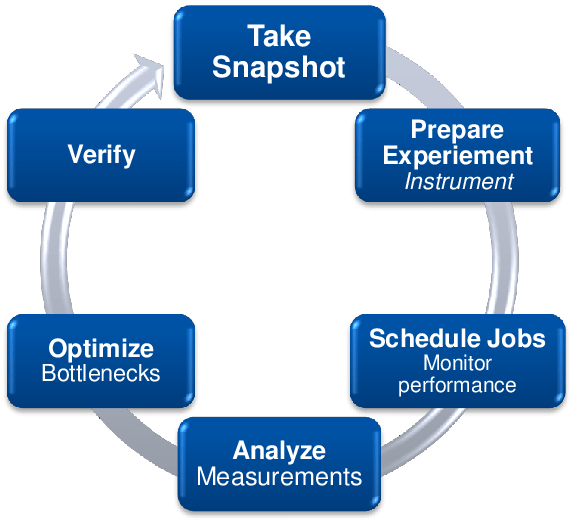
13. MongoDB Tools and Ecosystem
- Using MongoDB Compass for Data Visualization: Visualizing data with MongoDB Compass.
- Integrating with MongoDB Atlas (Cloud-based MongoDB): Overview of MongoDB’s cloud offering and its benefits.
- Introduction to MongoDB Shell (mongosh): Using the MongoDB shell for database management.
- Working with MongoDB Drivers for Various Languages: Introduction to MongoDB drivers and using them with different programming languages.
14. Case Studies and Practical Applications
- Real-World Use Cases of MongoDB: Examples of how MongoDB is used in various industries.
- Implementing MongoDB in Web Applications: Building web applications with MongoDB as the backend.
- MongoDB for Big Data and Analytics: Using MongoDB for big data solutions and analytics.
- Migrating from Relational Databases to MongoDB: Steps and best practices for migrating from SQL databases to MongoDB.
15. Troubleshooting and Maintenance
- Common Issues and Their Solutions: Identifying and resolving common MongoDB problems.
- Database Maintenance Tasks: Routine maintenance tasks to keep your database healthy.
- Monitoring and Logging: Setting up monitoring and logging for better database management.
- Upgrading MongoDB Versions: Best practices for upgrading to newer versions of MongoDB.
This expanded tutorial scope provides a thorough and detailed roadmap for learning MongoDB, covering all critical aspects from basics to advanced topics.
Comprehensive Guide to Installing MongoDB
Step 1: System Requirements
Before installing MongoDB, ensure your system meets the requirements:
- Operating Systems: MongoDB supports Windows, macOS, and Linux.
- Memory: At least 2GB of RAM.
- Storage: Sufficient disk space for your database.
Step 2: Download MongoDB
Visit the [MongoDB Download Center] and select the appropriate version for your operating system. Choose the community server version for a free, open-source MongoDB.
Step 3: Installation on Windows
- Run the Installer: Double-click the downloaded .msi file and follow the setup instructions.
- Custom Setup: Choose the Complete setup type for a typical installation or Customize if you need specific features.
- Service Configuration: Opt to install MongoDB as a Windows service for automatic startup.
- Finish Installation: Complete the installation and optionally install MongoDB Compass, a graphical interface for MongoDB.
Step 4: Installation on macOS
- Homebrew Installation: Open Terminal and install Homebrew if not already installed:
- /bin/bash -c “$(curl -fsSL https://raw.githubusercontent.com/Homebrew/install/HEAD/install.sh)”
- Install MongoDB: Use Homebrew to install MongoDB:
- brew tap mongodb/brew
- brew install mongodb-community@5.0
- Start MongoDB: Launch MongoDB as a service:
- brew services start mongodb/brew/mongodb-community
Step 5: Installation on Linux
1. Import the Public Key: Import the MongoDB public GPG key:
- wget -qO – https://www.mongodb.org/static/pgp/server-5.0.asc | sudo apt-key add –
2. Create a List File: Create a list file for MongoDB:
- echo “deb [ arch=amd64,arm64 ] https://repo.mongodb.org/apt/ubuntu focal/mongodb-org/5.0 multiverse” | sudo tee /etc/apt/sources.list.d/mongodb-org-5.0.list
3. Update and Install: Update the package list and install MongoDB:
- sudo apt-get update
- sudo apt-get install -y mongodb-org
4. Start MongoDB: Start the MongoDB service:
- sudo systemctl start mongod
Step 6: Verify Installation
- Windows: Open Command Prompt and type `mongo –version` to verify.
- macOS: Open Terminal and type `mongo –version.`
- Linux: Open Terminal and type `mongo –version.`
Step 7: Basic Configuration
- Configuration File: Edit the MongoDB configuration file (`mongod.conf`) to customize settings.
- Data Directory: Ensure the data directory (`/data/db` by default) exists and is accessible by MongoDB.
Following these steps will successfully install MongoDB on your system, allowing you to start building and managing your databases.
Configuring MongoDB: Crucial Procedures and Optimal Methods
1. Configuration File (`mongod.conf`)
The main configuration file for MongoDB, `mongod.conf`, is used to set various operational parameters. This file is typically located in the installation directory or specified during installation. Key sections include:
System Log Configuration:
- systemLog:
- destination: file
- path: /var/log/mongodb/mongod.log
- log-append: true
Storage Configuration:
- storage:
- DB path: /var/lib/mongo
- journal:
- enabled: true
Network Configuration:
- net:
- bindIp: 127.0.0.1
- port: 27017
Security Configuration:
- security:
- authorization: enabled
2. Data Directory
Ensure the data directory exists and is accessible by MongoDB:
- sudo mkdir -p /data/db
- sudo chown `id -u` /data/db
3. Starting and Stopping MongoDB
Start MongoDB:
- sudo systemctl start mongod
Stop MongoDB:
- sudo systemctl stop mongod
Restart MongoDB:
- sudo systemctl restart mongod
4. User Authentication
To enhance security, enable authentication and create administrative users:
Start MongoDB without authentication:
- sudo mongod –auth
Create an administrative user:
- use admin
- db.createUser({
- user: “admin,”
- pwd: “password”,
- roles: [ { role: “userAdminAnyDatabase,” db: “admin” } ]
- })
Enable authentication in `mongod. conf`:
- security:
- authorization: “enabled”
5. Backup and Restore
Regular backups are crucial for data integrity and recovery:
Backup:
- mongodump –out /path/to/backup
Restore:
- mongorestore /path/to/backup
6. Performance Tuning
Optimize performance by adjusting various settings:
Indexes: Create indexes to speed up queries:
- db. collection.createIndex({ field: 1 })
WiredTiger Cache: Configure the WiredTiger storage engine’s cache size in `mongod. conf`:
- storage:
- wiredTiger:
- engineConfig:
- cacheSizeGB: 2
Connection Pooling: Adjust connection pool settings for optimal concurrency handling.
7. Monitoring and Logging
Monitor MongoDB to ensure smooth operation and diagnose issues:
Enable detailed logging in `mongod. conf`:
- system log:
- verbosity: 1
Use monitoring tools: Integrate with tools like MongoDB Cloud Manager or third-party solutions to track performance metrics.
8. Sharding and Replication
For high availability and scalability, configure replication and sharding:
- Replication: Set up a replica set to ensure data redundancy.
- Sharding: Distribute data across multiple servers to handle large datasets efficiently.
By following these procedures and optimal methods, you can ensure that your MongoDB deployment is secure, efficient, and scalable.
Establishing Basic Monitoring for MongoDB
Monitoring your MongoDB deployment is crucial to ensure its health, performance, and reliability. Here are the steps to establish essential monitoring:
1. Enable Database Profiling:
Turn on database profiling to log slow queries and identify performance bottlenecks. Profiling helps track the execution time of operations, making it easier to pinpoint queries that are affecting performance. Use `db.setProfilingLevel()` to set the profiling level to log all operations, slow operations, or no operations based on your needs.
2. Utilize Built-in Monitoring Tools:
Use MongoDB’s built-in monitoring tools, such as `mongostat` and `mongo-top,` to track real-time performance metrics and database operations. `mongostat provides a quick overview of the database’s status, while `mongo-top` shows the read and write activity on a per-collection basis, helping to identify collections that might be causing performance issues.
3. Monitor Essential Metrics:
Focus on monitoring key metrics such as CPU usage, memory consumption, disk I/O, and network traffic. These metrics are critical for understanding the overall health and performance of your MongoDB instance. High CPU usage might indicate inefficient queries, while high disk I/O could point to issues with data storage or indexing.
4. Configure Alerts:
Set up alerts for critical metrics to receive notifications when thresholds are exceeded. For instance, you can configure alerts for high memory usage, slow queries, or low disk space. This proactive approach allows you to address potential issues before they escalate and impact the database’s performance and availability.
5. Leverage MongoDB Atlas:
If using MongoDB Atlas, take advantage of its comprehensive monitoring and alerting features. MongoDB Atlas provides detailed insights into various metrics, automated alerts, and the ability to set custom thresholds. This platform simplifies monitoring by offering a centralized dashboard for tracking the health and performance of your MongoDB deployments.
6. Analyze Logs:
Review MongoDB logs regularly to detect anomalies, errors, and warnings. Log analysis can help you uncover issues that are not immediately apparent through metrics alone. Tools like Graylog, ELK Stack, or Splunk can be used for centralized log management and analysis, making it easier to search, filter, and visualize log data.
7. Integrate Third-Party Monitoring Tools:
Use third-party monitoring solutions such as `New Relic,` `Datadog,` or `Prometheus` to gain additional insights and analytics for MongoDB performance and operations. These tools often provide more advanced features, such as custom dashboards, historical data analysis, and integration with other systems, enhancing your ability to monitor and manage MongoDB effectively.
By following these steps, you can establish a robust monitoring system for your MongoDB deployment, ensuring its health, performance, and reliability.
Exploring Advanced Topics in MongoDB:
MongoDB offers several advanced topics that enhance database management and application development. These topics include:
1. Aggregation Framework:
MongoDB’s aggregation framework allows for advanced data processing and analysis. It includes operators for grouping, sorting, filtering, and transforming data within collections. Understanding and leveraging aggregation pipelines can significantly enhance query efficiency and data manipulation capabilities.
2. Indexes and Query Optimization:
Efficient index usage is crucial for optimizing query performance in MongoDB. Advanced topics include:
- Creating compound indexes.
- Utilizing covered queries to avoid document retrieval.
- Understanding the impact of index selection on query execution plans.
Techniques such as index intersection and multi-key indexes can further optimize complex query operations.
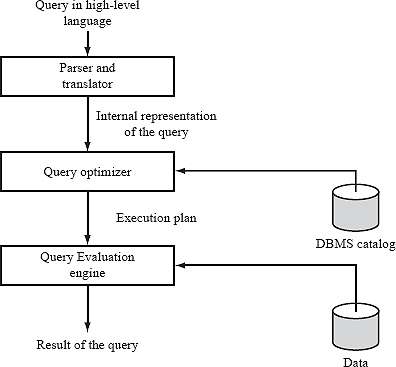
3. Replication and High Availability:
MongoDB supports replica sets, providing redundancy and high availability. Advanced topics include:
- Configuring replica set members.
- Managing elections.
- Implementing read preferences to distribute read operations across replica set members.
Understanding replica set architecture and failover procedures is essential for maintaining data availability.
4. Sharding for Scalability:
Sharding distributes data across multiple MongoDB instances (shards) to handle large datasets and high throughput. Advanced topics include:
- Configuring sharding clusters.
- Choosing shard keys for data distribution.
- Monitoring shard balancing and chunk migrations.
Properly implementing sharding strategies ensures horizontal scalability and efficient data distribution.
5. Transactions:
Starting from version 4.0, MongoDB supports multi-document transactions across replica sets. Advanced topics include using transactions to maintain data consistency and integrity across multiple documents or collections. Understanding transaction isolation levels, retriable writes, and transaction limits is essential for developing robust applications with MongoDB.
6. Schema Design Best Practices:
MongoDB’s flexible schema allows for dynamic document structures, but proper schema design is crucial for performance and scalability. Advanced topics include:
- Embedding versus referencing documents.
- Managing schema evolution.
- Optimizing document size and structure for efficient storage and retrieval.
7. Geospatial Indexing and Queries:
MongoDB supports geospatial data types and indexing, enabling spatial queries for location-based applications. Advanced topics include creating geospatial indexes, performing proximity searches, and leveraging geospatial queries for spatial analysis and visualization.
8. Security and Authentication:
Advanced security topics include:
- Implementing role-based access control (RBAC).
- Enabling SSL/TLS encryption for data in transit.
- Securing MongoDB deployments against unauthorized access and attacks.
Understanding authentication mechanisms and encryption options ensures data protection and compliance with security best practices.
Exploring these advanced topics in MongoDB empowers developers and database administrators to maximize MongoDB’s capabilities for building scalable, high-performance applications and managing complex data environments effectively.
Conclusion:
MongoDB represents a versatile and powerful NoSQL database solution renowned for its flexibility, scalability, and robust performance in modern applications. Its document-oriented architecture and dynamic schema management enable efficient storage and retrieval of diverse data types. MongoDB supports large-scale applications and real-time analytics through features like the aggregation framework for complex data processing; replica sets ensuring high availability and sharding for horizontal scalability. Advanced capabilities such as geospatial indexing, multi-document transactions, and robust security measures further elevate its utility.


